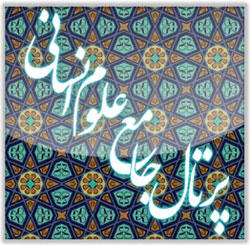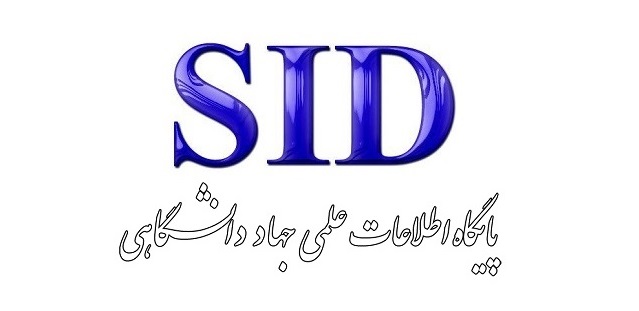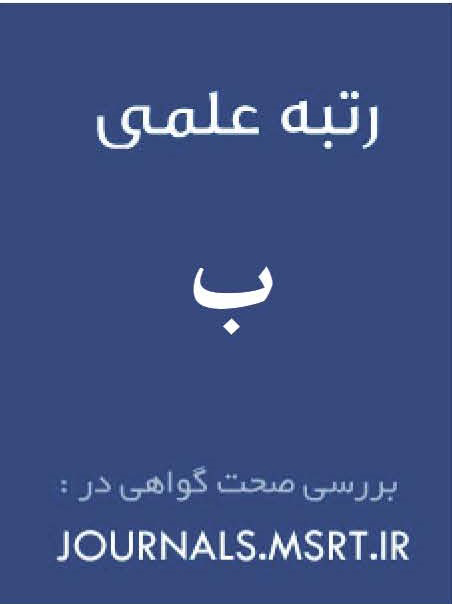خوانشی دیگر از خطبه شقشقیه: تحلیل زبانشناختی نقشگرا در پرتو شروح روايي و ادبی
کلمات کلیدی:
اميرالمؤمنين(ع), نهج البلاغه, خطبة شقشقیه, رویکرد نقشگرای هلیدی, فراکارکرد متنیچکیده
پژوهش حاضر با هدف بررسی کارایی زبانشناسی متن در فهم لایههای معنایی گوناگون متون دینی، به تحلیل خطبه شقشقیه بر اساس فرانقش متنی نظریه نقشگرای هلیدی میپردازد. روش تحقیق، توصیفی-تحلیلی است و با بررسی خطبه، نقش و انواع ساختارهای آغازگری-پایانی و کارکرد انواع عوامل انسجام (دستوری، واژگانی و پیوندی) در ایجاد پیوستگی متنی به تفصیل تحلیل شده است. یافتههای تحلیل زبانشناختی، به طور نظاممند با توضیحات و تفاسیر شارحان برجسته، ملا محمدباقر مجلسی در بحار الأنوار و شارح خویی در منهاج البراعه و همچنین نتایج مطالعات بلاغی و مفهومی دیگر، تطبیق و تکمیل گردیده و به تناسب بحث، به آموزههای مدیریتی مرتبط با نتایج تحلیل نیز اشاره شده است. نتایج این مطالعه، بیانگر انسجام ساختاری و معنایی بسیار بالای خطبه شقشقیه است كه طي آن تمام ظرفیتهای فرانقش متنی برای ایجاد متنی منسجم و پویا و انتقال دقیق نگرش و برجستهسازی مفاهیم کلیدی بهكار گرفته شده است. یافتههای زبانشناختی در اغلب موارد، همسو با فهم و تفسیر شارحان از ظرایف است. این پژوهش نشان میدهد که تلفیق تحلیل زبانشناختی نقشگرا با شروح معتبر روايي-بلاغی، ابزاری کارآمد برای کشف لایههای متعدد معنایی و بلاغی در متون ديني و كمك به فهم آنهاست؛ رويكردي كه در کنار تعمیق فهم ادبی و فقه الحدیثی، امكان دریافت معاني ثانويه و آموزههای میانرشتهای (از جمله در عرصه مدیریت اسلامي) را فراهم ميآورد.
دانلودها
مراجع
Abbasi, A. A. (2019). nalytical comparison of the views of two expositors of Nahj al-Balagha (Ibn Abil-Hadid and Ibn Meytham) on Sheqsheqiya sermon. Shi'ite Studies, 17(66), 37–54.
Abduh, M. (n.d.). Qadim Nahj al-Balagha. Dar Ihya al-Turath al-Arabi.
Abdullah, M. H. (2002). Ibrahim Touqan (His life and technical studies in his poetry). Abdulaziz Saud Al-Babtain Foundation for Poetic Creativity.
Ahmadi Givi, H., & Anvari, H. (1996). Dastur-e zaban-e Farsi (Persian Grammar) (Vol. 1). Fatemi Publications.
Al-Jafari al-Zaynabi al-Isfahani, M. b. T. (2024). Kalemat Sayyid al-Arab Abi al-Hasan Ali ibn Abi Talib Salawat Allah Alayh. Researchers of Commission, Al-Allamah al-Majlesi Library.
Amiri Khorasani, A., & Ali Nejad, H. (2015). The sea of rhetoric in the sermons of Nahj al-Balagha based on structural coherence. Literary Research Quarterly, 63, 7–31.
Amraei, M. H., & Bamari, A. W. (2020). Analysis of cohesion factors in Imam Ali's Shiqshiqiyyah sermon based on Halliday & Hasan's model. Institute of Humanities and Cultural Studies, 175–202.
Bahrani, M. b. A. (1983). Commentary on Nahj al-Balagha (Ibn Maytham's Commentary). Dar al-Kitab Publishing.
Boroujerdi, M. (2001). A look at the commentaries of Nahj al-Balagha. Qabasat(19).
Eghbal, E. (2023). Rhetorical Manifestations in the Shiqshiqiyyah Sermon of Nahj al-Balagha [Research]. Safineh The quarterly of specialized studies Special issue on the Quran and Hadith, 20(78), 159–174.
Fotouhi, M. (2010). Rhetorical imagery (2nd ed.). Sokhan Publications.
Ganjali, A., & Salmanihaghighi, M. (2023). Analyzing the function of relational coherence components in the organization of the syntactic-semantic structure of the Holy Quran based on the approach of McHoliday and Ruqiyeh Hassan. Stylistics Studies of the Holy Quran, 7(2), 9–26.
Gholami, S. S., & Hadi Fard, F. (2024). A study of coalesce of words with meaning in Nahj al-Balaghea's sermon of Shagshaqiya based on the theory of Maurice Grammon. Semantic Studies in Literary Texts, 1(4), 18–34.
Halliday, M. A. K. (1985). An Introduction to Functional Grammer. Edward Amold.
Halliday, M. A. K. (1994). Systemic theory. In Asher.R.E (Ed.). https://doi.org/10.1016/B978-0-08-042580-1.50048-9
Halliday, M. A. K., & Hasan, R. (2014). Language, context and text (M. Nobakht, Trans.). Shahroud.
Hashemi Khuei, M. H. (1980). Minhaj al-Bara’a fi Sharh Nahj al-Balagha. Maktabat al-Islamiyya.
Ibn Abi al-Hadid al-Madaini, A. H. I. a. D. b. H. A. b. M. b. M. (1983). Commentary on Nahj al-Balagha. Maktabat al-Mar’ashi al-Najafi.
Ibn Babawayh, M. b. A. (1983). Ma'ani al-Akhbar Islamic Publications Office.
Ibn Babawayh, M. b. A. (2006). Ilal al-Shara'i Davari Bookstore.
Ibn Shahrashub al-Mazandarani, M. b. A. (1959). Manaqib Al Abi Talib. Allameh Publications.
Jahanbakhsh, J. (2002). Darāyatī Naw-Āyīn az Riwāyatī Dīrīn (Ta’ammulī Dīgar dar Khuṭbah al-Shiqshiqiyyah wa Farjām-i ān)" [A Modern Understanding of an Ancient Narration (A Further Reflection on Sermon al-Shiqshiqiyyah and its Conclusion)]. Hawzah-yi Isfahan, 9.
Khaledi Sardashti, A., & Mousavi Bafrouei, S. M. (2021). A phonological study of Shaqshaqiyeh sermon and its position on the semantic meaning of letters and words. Literary Studies of Islamic Texts, 6(20), 49–66.
Mahmoudi, S., Cheraghivash, H., & Mirzaei Al-Husseini, S. M. (2019). Analysis of the literary discourse strategy in the Shaqshaqiya sermon. Quran and Hadith Studies, 51(1), 201–224.
Majidi, H., & Alizadeh Teymurluyi, Y. (2019). Affective and magical aspects of the Sheqsheqieh sermon. Literary Studies of Islamic Texts, 4(15), 151–170.
Majlisi, M. B. b. M. T. (1984). Bihar al-Anwar al-Jami'a li-Durar Akhbar al-A'imma al-Athar. Dar Ihya al-Turath al-Arabi.
Mishkat al-Dini, M. (2009). The secret of linguistics Ferdowsi University Press.
Mohammadi, R., & Bazoubandi, H. (2021). The study of the way of meaning exchange in Shaqshaqiya sermon of Nahj al-Balagha within Halliday’s Systemic Functional Linguistics (SFL) (2014). Language Science, 8(13), 115–149.
Moin al-Dini, F. (2003). Techniques of creating textual cohesion in Kalīlah wa Dimnah. Fornagh Journal(46), 303–326.
Mousavi Bafroei, M., Ghafoorimanesh, M., Zare Zardini, A., & Nazari, R. (2022). Conceptual analysis of Shegsheqiyah lecture, with an emphasis on foregrunding in the method of metaphor and allusion. Emamat Pajouhi, 12(1), 167–187.
Mousavi, S. S. (1997). Tamam Nahj al-Balagha. Imam Sahib al-Zaman Institute (AJ).
Mufid, M. b. M. (1992). Al-Irshad fi Ma'rifat Hujaj Allah 'ala al-'Ibad. Sheikh Mufid Congress.
Najafi Ivaki, A., Rasoulnia, A. H., & Kaveh Nooshabadi, A. (2017). A textual study of al-Shiqshiqiyya sermon emphasis on Searle`s Speech Act Theory. Quarterly Journal of Nahj al-Balagha Research, 5(19), 1–17.
Nouroozi, H., & Gholamhosseinzadeh, G. (2010). The role of temporal connective factors in text cohesion. Journal of Kavoshnameh in Persian Language and Literature, 10(19), 97–122.
Pahlavan, M. (2021). Textual analysis and translation of Nahj al-Balagha. Dar al-Kutub al-Islamiyya.
Rafat, M. (2011). Methodology of 'Minhaj al-Bara'a fi Sharh Nahj al-Balagha'. Hadith Sciences, 59, 207–244.
Rafat, M. (2018). Ibn Abi'l-Hadid and Maitham al- Bahrani: A comparative analysis of Shaqshaqiya sermon. Nahjolbalagheh Research, 17(2), 59–96.
Robins, R. H. (2014). A short history of linguistics (A. M. Haghshenas, Trans.). Maad Publications.
Sabzianpour, V. (2010). Translation challenges of Imam Ali's sermons in Nahj al-Balagha. Quran and Hadith Studies Journal(1), 77–98.
Salehi, F. (2007). Semantics and Halliday's systemic functional grammar. Book of the Month: Literature(8), 32–41.
Salehi, P. (2022). A new reading of the Jihad sermon of Imam Ali (a.s.) based on the theory of textual meta-functionality (Halliday's role-oriented approach). Imam Ali ΄s Studies, 13(26), 169–193.
Shafai, A. (1983). Advanced Persian grammar. Asatir Publications.
Shamisa, S. (1989). A new look at rhetoric. Ferdows Publishing.
Shamisa, S. (2008). Bayan (Rhetoric). Ferdows Publishing.
Sharif al-Radi, M. b. H. (1993). Nahj al-Balagha. Hijrat Publications.
Sharifi, M. (2001). The rhetoric in Nahj al-Balagha: A stylistic analysis of eloquence in Nahj al-Balagha. Basharat Humanities Sciences Journal(23), 24.
Tabrasi, A. b. A. (1983). Al-Ihtijaj 'ala Ahl al-Lijaj. Morteza Publications.
Taleghani, M. (1995). A reflection on Nahj al-Balagha. Ministry of Culture and Islamic Guidance.
Tayarani, M. S., Soltani, S. A., & Rabiee, A. (2019). The analysis of the Shaqshaqiya sermon with reliance on sociopolitical context, theory and the principles of rhetoric. Journal of Linguistics and Khorasan Dialects, 11(1), 173–192.
Tusi, M. b. a. H. (1993). Al-Amali. Dar al-Thaqafa.
Wikishia. (2025). Al-Shiqshiqiyya Sermon. In Wikishia (Arabic) (February 16, 2025 ed.).
Yarmohammadi, L. (2004). Common and critical discourse analysis Hermes.
Zoodranj, S., & Arbati Moghadam, S. (2022). Analysis of Shaqshaqiya sermon by the critical discourse analysis approach. Quarterly Journal of Nahj al-Balagha Research, 10(37), 115–139.
دانلود
چاپ شده
ارسال
بازنگری
پذیرش
شماره
نوع مقاله
مجوز
حق نشر 2025 معرفت و بصیرت اسلامی

این پروژه تحت مجوز بین المللی Creative Commons Attribution-NonCommercial 4.0 می باشد.







